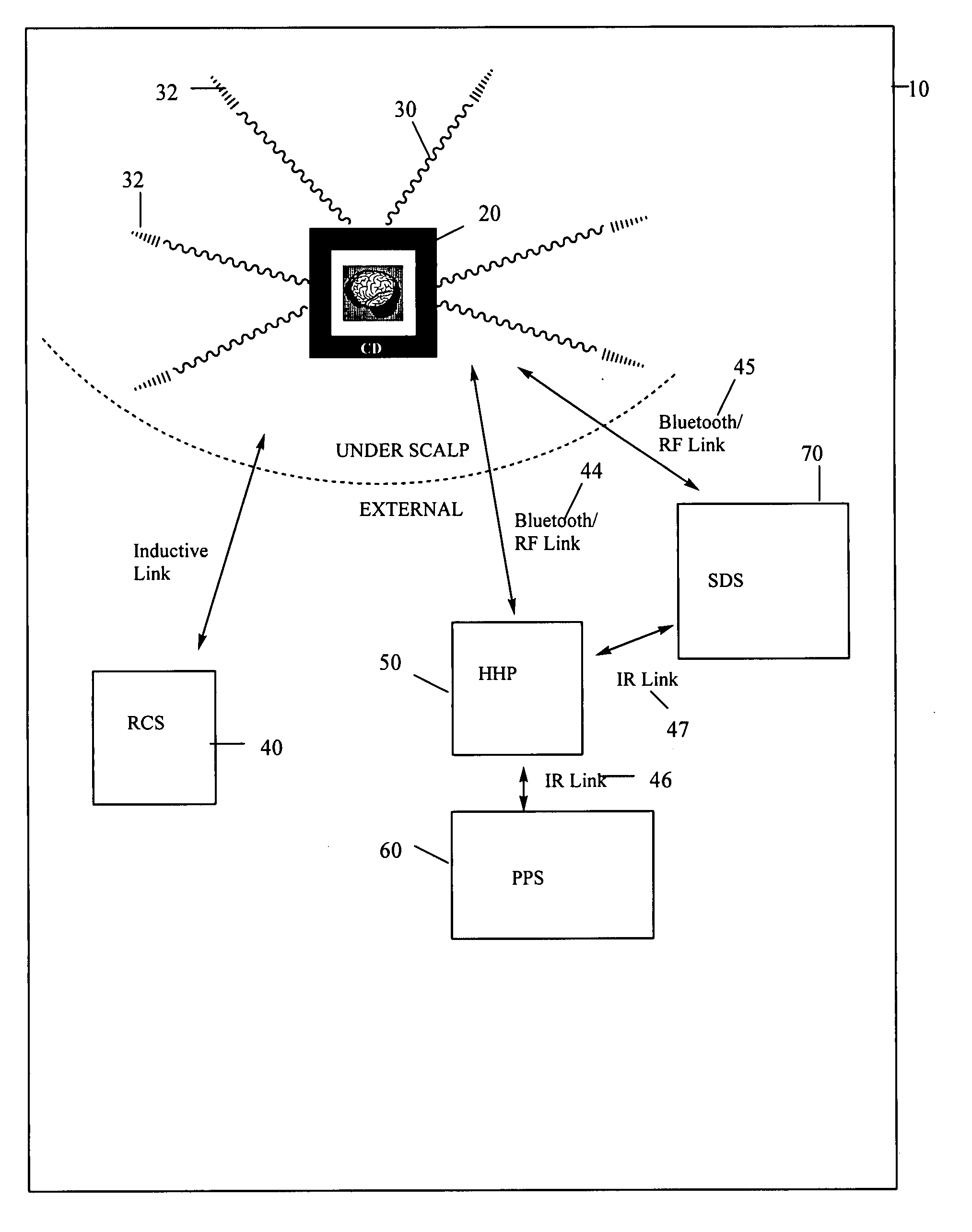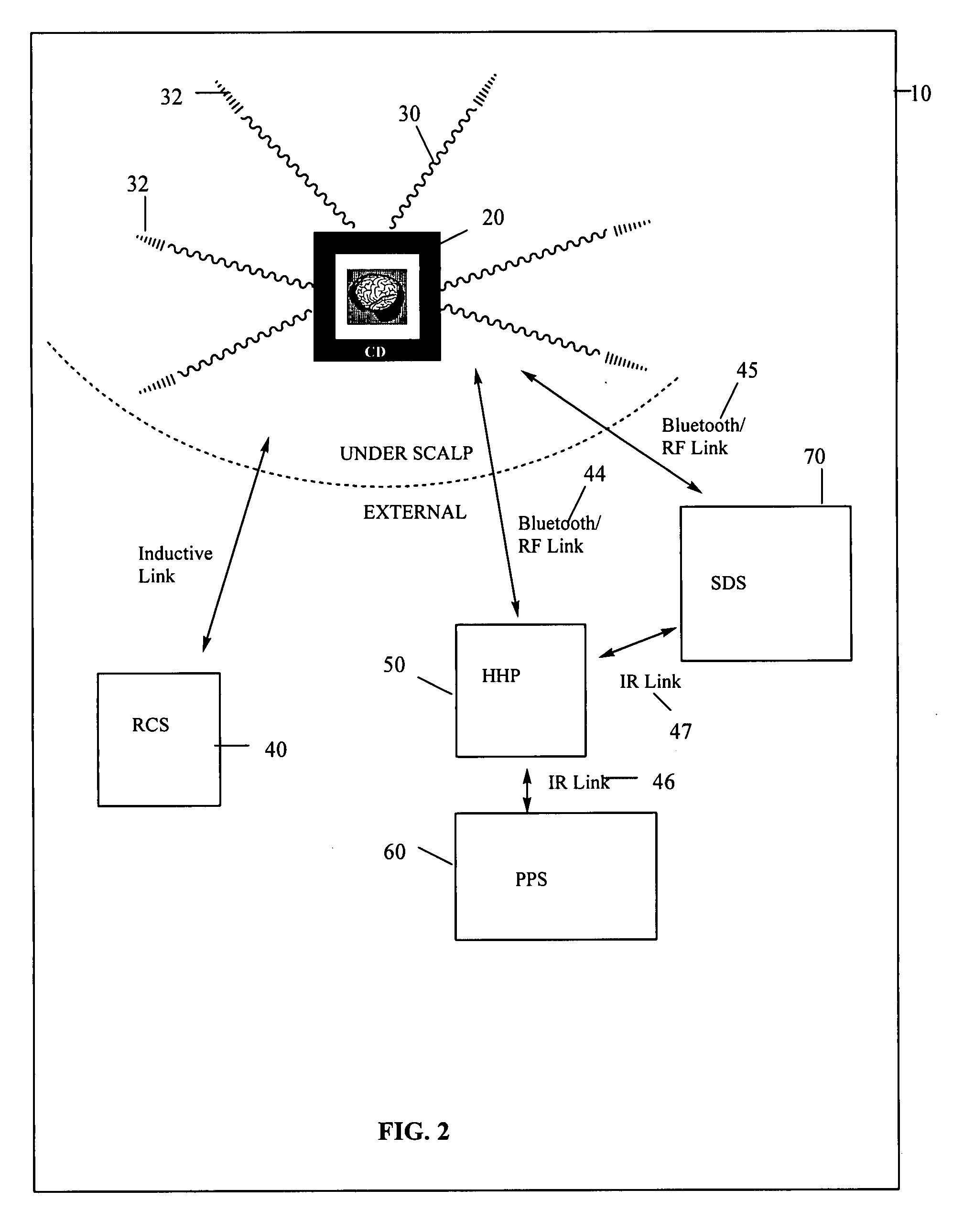Device for multicentric brain modulation, repair and interface
a multi-centric brain and neural network technology, applied in the field of multi-centric brain modulation devices, can solve the problems of increasing refractory, many patients are left with significant and life-threatening diseases, and many patients are not adequately helped, so as to shorten the operating room time and the placement of electrodes, and achieve easy and effective implanting. , the effect of reducing the noise level
- Summary
- Abstract
- Description
- Claims
- Application Information
AI Technical Summary
Benefits of technology
Problems solved by technology
Method used
Image
Examples
example 1
[0079]The implantation of the cranial device is done without need for general anaesthesia. The scalp is incised a burr hole is created in the skull using standard neurosurgical techniques, all electrodes are inserted to the desired brain regions through the burr hole using currently used microelectrode recording techniques or functional imaging. Then, the cranial chip device itself would act as the burr hole cap. Once the device has been implanted and anchored to the skull, the scalp is put back and the device is ready for testing and the functioning of individual stimulus electrodes.
example 2
[0080]The implanted device is controlled in the clinic using the hand held controller and clinicians programming system. The electrodes are put in a therapeutic mode. The electrodes are individually adjusted to produce optimum therapeutic benefit which is determined both based on the therapeutic efficacy and by functional imaging where possible.
example 3
[0081]The patient has some control on level of stimulation for active electrode leads. The patient uses the hand-held controller to modulate the level of the electrode stimulation and to determine the remaining charge on the storage device. If the charge indicator falls below a certain level the patient uses the RCS and wears a hat to recharge the device. The recharge would occur in a few hours.
PUM
 Login to View More
Login to View More Abstract
Description
Claims
Application Information
 Login to View More
Login to View More - R&D
- Intellectual Property
- Life Sciences
- Materials
- Tech Scout
- Unparalleled Data Quality
- Higher Quality Content
- 60% Fewer Hallucinations
Browse by: Latest US Patents, China's latest patents, Technical Efficacy Thesaurus, Application Domain, Technology Topic, Popular Technical Reports.
© 2025 PatSnap. All rights reserved.Legal|Privacy policy|Modern Slavery Act Transparency Statement|Sitemap|About US| Contact US: help@patsnap.com



